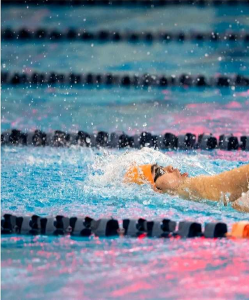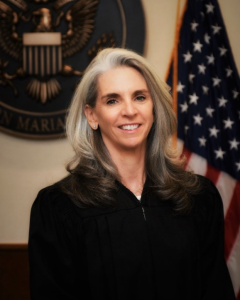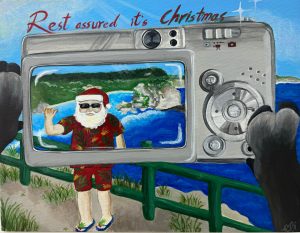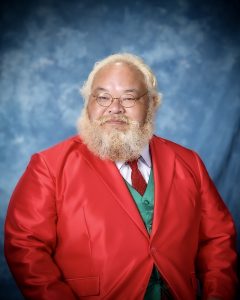Camp Chalan Kanoa: What was it?
On this day 80 years ago, July 9, 1944, Lt. Gen. Holland Smith, USMC, speaking from his headquarters in Chalan Kanoa, declared that the island of Saipan was secure. That did not mean all the Japanese soldiers and sailors had been killed or captured, but rather that the they would not be able to take it back. Many Marines and soldiers would die from sniper fire before the war was over 13 months later.
During the early planning for the capture of Saipan, it had been recognized that there would be a large civilian population on the island, the first the U.S. would experience during the Pacific War.
The majority would be Japanese citizens (including Okinawans and Koreans at that time), with a minority of Chamorros and Carolinians. Although good plans were laid by Marine Corps Civil Affairs, they came to naught on June 15, the day the Marines landed at Sugar Dock, Chalan Kanoa.
With chaos and mayhem raining on the beach at Chalan Kanoa, no civilians were seen on invasion day. However, as the Marines moved forward the next day civilians would come out from under the rubble in the sugarcane factory area, begging for a drink of water. The Marines, not concerned about nationality at that moment, took these destitute people to the beach—more or less out of harm’s way. All civilians, regardless of race, were held there with no shelter of any nature, other than the shade of a destroyed landing craft. A handful of Marines and Seabees who could be released from combat did their best to provide the refugees with a drink of water and perhaps some extra C-rations.
As the Marines, joined by the men of the 27th Infantry Division, continued the drive forward, more and more refugees were discovered and moved to the beach. In the Susupe area, five temporary, barbed-wire stockades were quickly erected by Seabees on the landing beaches where security could be maintained and emergency relief provided. The 4th Marine Division erected three in their landing area near Sugar Dock in Chalan Kanoa, while the 2nd Division erected two in Susupe. By Day 3, June 18, the number of refugees had reached 8,130, a large percentage of them infant orphans.
On June 19, a military government was officially established on Saipan. Preventing acts of sabotage by the Japanese was their primary concern. The refugees were interviewed by American translators to determine their nationality and ethnicity. Japanese military personnel who had thrown away their uniforms and donned civilian clothing were transferred to a POW camp.
Each and every refugee was inspected for diseases that might be transferred to the American troops.
Chamorros and Carolinians were considered “liberated” peoples. Koreans were identified as citizens of a country that would regain its sovereignty after the war. The Japanese civilians, including Okinawans, were treated as citizens of an enemy nation and guarded to prevent acts of sabotage. Segregation of ethnic groups, Japanese, Korean, and Okinawans, was maintained in the camps.
Among the civilians interviewed, American translators discovered who could speak English. Some, like Gregorio Sablan, the first elected high chief of Saipan, and Elias P. Sablan, who was sworn in as high chief upon the passing of Sablan, were among the first to step forward and offer to help the Americans. They, and others like them, worked closely with the military leadership to manage affairs.
Listening to the local civilians, military civil affairs concluded there should be two refugee camps, one for Asians and one for locals. The Japanese, Okinawans, and Koreans would remain in Camp Susupe for the duration of the war. The Chamorros and Carolinians were moved into a new camp in Chalan Kanoa on Nov. 15, 1944. Although many of the houses formerly occupied by Japanese sugar mill employees had been damaged or destroyed by the war, many were in repairable condition. They were made livable with materials salvaged from nearby villages, with help by a scrounging detail from civil affairs.
The Chamorros and Carolinians were allowed out of the village during daylight hours to work with the military or to farm pieces of land allotted to them for growing vegetables. They also elected their own Camp Chalan Kanoa leadership, managed basic camp operations, and established private businesses along the beach road, catering to U.S. military personnel.
During their time off, military personnel walked through Chalan Kanoa and purchased hand-made items from the shops on the main road. This also gave the Chamorros and Carolinians an opportunity to practice the English language they were learning in the camp school.
Surprising everyone, the U.S. dropped atom bombs on Hiroshima and Nagasaki on Aug. 6 and 9, respectively, bringing the war to a climactic end. Suddenly, the war was over. The surrender documents were signed on Sept. 2. War demobilization began immediately. The Marines, soldiers, and sailors wanted to go home, and America brought them home as quickly as possible.
Not everyone was happy about American departure. As they left, the American money went with them. The small stores began to close.
The repatriation of Saipan’s Japanese, Okinawans, and Koreans began on Dec. 21, 1945. By late March, Camp Susupe was emptied, decommissioned, and destroyed. The mass exodus of 150,000 military personnel in the winter of 1945-1946 nearly depopulated the island.
When Camp Chalan Kanoa was decommissioned on July 4, 1946, there were about 4,000 Chamorros and Carolinians on Saipan, along with a handful of military administrators. Many of the Chamorros and Carolinians living in Camp Chalan Kanoa chose to remain in the village. Some descendants of those families still live in their prewar houses. The rest returned to their prewar villages, or moved into new villages as they were opened.
Today, Camp Chalan Kanoa is only remembered during the annual 4th of July Parade, now known as “Liberation Day,” Saipan, commemorating the day the gate was opened, July 4, 1944.
Don A. Farrell is an educator, local historian, and author based on Tinian. He is known for his research and publications on the history of the Mariana Islands with an emphasis on World War II.

The Japanese internment camp on Saipan.
-CONTRIBUTED PHOTO

The Chamorro internment camp on Saipan.
-CONTRIBUTED PHOTO

Japanese orphans in Camp Susupe.
-CONTRIBUTED PHOTO

Capt. R. A. Simpson, M.C. 369th Station Hospital.
-CONTRIBUTED PHOTO

A doctor with an injured woman.
Flag raising at Chalan Kanoa.
-CONTRIBUTED PHOTO

The local entertainment in the Chamorro internment camp.
-CONTRIBUTED PHOTO




